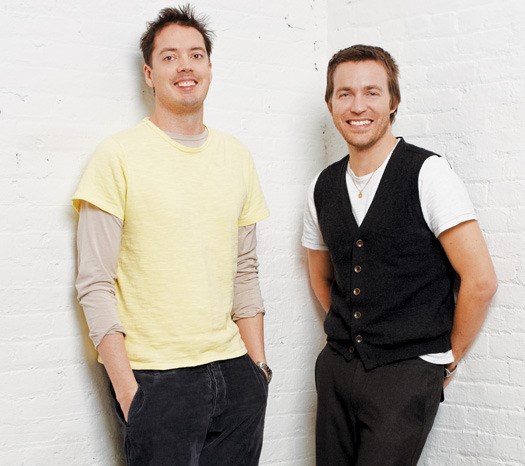Marcus Wainwright and David Neville are the British boys behind Rag & Bone, the successful New York label that was named the 2010 Council of Fashion Designers of America menswear designer of the year. WE chatted with the dynamic design duo during their first visit to Vancouvers Holt Renfrew (737 Dunsmuir St., 604-681-3121, HoltRenfrew.com).
WE: So where exactly in England are you from? Youre known as two British designers living in New York, but Englands pretty big. My boyfriend is from England, too, so Im also just curious.
MW: Our school was about an hour west of London.
DN: You like English boys, do you?
MW: Well that was quite direct.
WE: Its okay. Ive met his wife [makeup artist Gucci Westman]! So when did you move to New York?
DN: Marcus was there first. He arrived in 2001 and we launched Rag & Bone in 2002. We didnt actually sell anything until 2004, though, and we had our first show in February 2005.
WE: Your spring and fall collections are your most fashion-forward yet. Do you feel like the brand has come into its own?
DN: Yeah, totally, you can see the direction big time. Weve learned a lot, figuring out what elements are saleable and accessible versus just fashion, while still having a point of view as a brand and evolving.
MW: The turning point for us was fall 2010, when we split our mens and womens shows. Until then, we were showing together and you couldnt really push one or the other. They have to be in the same family when you show them together, which limited us. When we changed that, it gave us the freedom to go in a different direction.
WE: What exactly is Rag & Bone?
MW: Well, were obviously English, we went to boarding school, grew up wearing tailored clothing, wearing suits; and then theres the military school element fatigues, uniform influences; then starting in Kentucky theres a big workwear, denim aspect; and then now were in New York, and were one of the newer, younger, New York brands.
WE: What were you doing before all this?
MW: I had a telecomm company in England that paid me an ongoing commission, so I rented out my flat and went to live in Mexico and met a girl on the beach, who Im now married to. She was from New York, so I packed my backpack and moved there.
DN: I was working at an investment bank, but I was coming to New York quite a lot because I worked in the U.S. part of the group. I always had an affinity to New York. I used to come with my mom for Christmas shopping. Its a pretty intoxicating place.
WE: And once you were in New York, how did you start in fashion?
MW: I had the idea to try and make a pair of jeans, and spent about 15 months doing research. I tried doing them in Asia, but it was a complete disaster. I eventually found the place in Kentucky.
WE: Have you seen the TV show How to Make it in America?
DN: No, but it sounds a lot like us.
WE: Does it feel weird that youve been so successful in fashion?
MW: Yes, every now and then. Its been an interesting ride, and it is surprising sometimes, especially when we go back to England and our friends are not friends we met in fashion.
DN: Its a different world, but its fun. Its a distinct balance between art and commerce for us. A lot of people think its about fashion shows and jetting around, but thats really only about 20 per cent of it. Its really a business.



